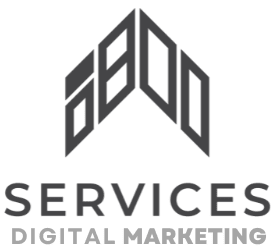Elevating Your Business with Proven How to Conversion Rate Optimization Tactics:
1. Conversion Rate Analysis
- Definition: Conversion rate analysis involves evaluating the percentage of website visitors who take a desired action, such as making a purchase or filling out a form, to understand the effectiveness of a website or marketing campaign.
- Importance: Conversion rate analysis is crucial for businesses to measure how well their website or marketing efforts are converting visitors into customers, providing insights for improving overall performance.
- Need: Businesses need conversion rate analysis to identify areas of improvement, optimize user experiences, and ultimately increase the likelihood of visitors taking valuable actions.
2. A/B Testing
- Definition: A/B testing, or split testing, is a method where two versions (A and B) of a webpage, email, or ad are compared to determine which performs better in terms of the desired outcome.
- Importance: A/B testing is crucial for optimizing various elements, such as headlines, images, or call-to-action buttons, to find the most effective combination that drives higher conversion rates.
- Need: Businesses need A/B testing to make data-driven decisions, refine their content, and enhance user experiences based on insights gained from comparing different variations.
3. Multivariate Testing
- Definition: Multivariate testing involves testing multiple variations of different elements on a webpage simultaneously to analyze the combined impact of various changes on user behavior.
- Importance: Multivariate testing is crucial for understanding how different combinations of elements interact and influence user actions, allowing for more nuanced optimization.
- Need: Businesses need multivariate testing to fine-tune complex webpages, uncover optimal combinations, and refine strategies for maximum impact on conversion rates.
4. User Experience (UX) Optimization
- Definition: UX optimization focuses on improving the overall experience users have on a website, ensuring it is intuitive, easy to navigate, and aligns with user expectations.
- Importance: UX optimization is crucial for keeping visitors engaged, reducing bounce rates, and enhancing satisfaction, ultimately leading to increased conversions and customer loyalty.
- Need: Businesses need UX optimization to create a positive and seamless journey for users, making it more likely for them to complete desired actions.
5. Landing Page Optimization
- Definition: Landing page optimization involves refining specific pages designed for marketing campaigns to ensure they are highly relevant, compelling, and encourage visitors to take a specific action.
- Importance: Landing page optimization is crucial for maximizing the impact of marketing efforts, improving conversion rates, and providing a focused and persuasive user experience.
- Need: Businesses need landing page optimization to create targeted and high-converting pages that align with the expectations set by marketing campaigns.
6. Call-to-Action (CTA) Optimization
- Definition: CTA optimization involves refining the design, copy, and placement of call-to-action buttons or links to encourage users to take a specific action, such as making a purchase or filling out a form.
- Importance: CTA optimization is crucial for guiding visitors toward desired actions, improving conversion rates, and making it clear what steps users should take next.
- Need: Businesses need CTA optimization to create compelling and effective prompts that drive user engagement and contribute to overall conversion goals.
7. Form Optimization
- Definition: Form optimization focuses on improving the design and functionality of online forms to make them user-friendly, reducing friction, and increasing the likelihood of form completions.
- Importance: Form optimization is crucial for minimizing user frustration, gathering accurate information, and facilitating smoother interactions that lead to higher conversion rates.
- Need: Businesses need form optimization to streamline the data collection process, ensuring that users feel comfortable providing necessary information without abandoning the form.
8. Checkout Process Optimization
- Definition: Checkout process optimization involves refining the steps users take to complete a purchase, aiming to make the process efficient, trustworthy, and user-friendly.
- Importance: Checkout process optimization is crucial for reducing cart abandonment, increasing successful transactions, and enhancing the overall online shopping experience.
- Need: Businesses need checkout process optimization to simplify the path to purchase, instill confidence in users, and ultimately boost online sales.
9. Website Speed Optimization
- Definition: Website speed optimization focuses on improving the loading times of a website, ensuring that pages load quickly and efficiently for a better user experience.
- Importance: Website speed optimization is crucial for retaining visitors, reducing bounce rates, and positively impacting search engine rankings, ultimately leading to improved conversion rates.
- Need: Businesses need website speed optimization to provide a smooth and responsive browsing experience, preventing users from leaving due to slow page loading times.
10. Heatmaps and Click Tracking
- Definition: Heatmaps and click tracking tools visually represent user interactions on a webpage, highlighting where users click, move their cursors, or spend the most time.
- Importance: Heatmaps and click tracking are crucial for understanding user behavior, identifying areas of interest, and making informed decisions for website optimization.
- Need: Businesses need heatmaps and click tracking to gain insights into how users interact with their website, allowing for data-driven improvements that enhance the overall user experience and drive conversions.
11. User Behavior Analysis
- Definition: User behavior analysis involves studying how users interact with a website or digital platform, examining patterns, preferences, and actions to inform optimization strategies.
- Importance: User behavior analysis is crucial for understanding the needs and preferences of the target audience, guiding website improvements, and creating a user experience that aligns with user expectations.
- Need: Businesses need user behavior analysis to tailor their online presence to the preferences and habits of their audience, ultimately improving user satisfaction and conversion rates.
12. Website Personalization
- Definition: Website personalization involves tailoring content, offers, and recommendations based on individual user preferences, behaviors, and characteristics.
- Importance: Website personalization is crucial for creating a more engaging and relevant user experience, increasing the likelihood of conversions by delivering content that resonates with each visitor.
- Need: Businesses need website personalization to enhance user engagement, build stronger connections with visitors, and guide them toward personalized recommendations and actions.
13. Conversion Funnel Optimization
- Definition: Conversion funnel optimization involves refining the series of steps users take from initial awareness to the completion of a desired action, such as making a purchase.
- Importance: Conversion funnel optimization is crucial for identifying and addressing potential drop-off points, refining the user journey, and maximizing the number of users who successfully progress through each stage of the conversion process.
- Need: Businesses need conversion funnel optimization to systematically improve the efficiency of the user journey, ensuring that users smoothly transition from awareness to conversion, ultimately boosting overall conversion rates.
14. Cart Abandonment Analysis and Solutions
- Definition: Cart abandonment analysis involves examining the reasons users abandon their shopping carts before completing a purchase, and implementing strategies to reduce abandonment rates.
- Importance: Cart abandonment analysis is crucial for recovering potentially lost sales, understanding user objections, and implementing solutions to encourage users to complete their transactions.
- Need: Businesses need cart abandonment analysis and solutions to recover revenue, enhance the checkout experience, and address any obstacles preventing users from finalizing their purchases.
15. Conversion Tracking and Attribution
- Definition: Conversion tracking involves monitoring and attributing specific actions or events on a website to understand the impact of marketing efforts and allocate credit to the channels that contribute to conversions.
- Importance: Conversion tracking and attribution are crucial for determining the effectiveness of different marketing channels, optimizing budget allocation, and measuring the return on investment for each channel.
- Need: Businesses need conversion tracking and attribution to make informed decisions about marketing strategies, ensuring resources are allocated to channels that drive the most valuable outcomes.
16. Customer Journey Mapping
- Definition: Customer journey mapping involves visualizing and analyzing the entire end-to-end experience a customer has with a brand, from initial awareness to post-purchase interactions.
- Importance: Customer journey mapping is crucial for understanding the customer’s perspective, identifying touchpoints, and optimizing each stage of the journey to create a seamless and satisfying experience.
- Need: Businesses need customer journey mapping to align their strategies with customer expectations, enhance satisfaction, and build long-term relationships by addressing pain points and opportunities across the entire journey.
17. Usability Testing
- Definition: Usability testing involves observing real users interacting with a website or product to identify usability issues, gather feedback, and ensure that the user interface is intuitive and easy to navigate.
- Importance: Usability testing is crucial for uncovering potential obstacles that may hinder user interaction, refining design elements, and ultimately improving the overall user experience.
- Need: Businesses need usability testing to validate design choices, enhance user satisfaction, and optimize their digital platforms for better engagement and conversion rates.
18. Mobile CRO (Conversion Rate Optimization)
- Definition: Mobile CRO focuses specifically on optimizing the user experience and conversion rates for visitors accessing a website through mobile devices.
- Importance: Mobile CRO is crucial given the increasing number of users accessing websites on mobile devices, ensuring a seamless and conversion-friendly experience on smartphones and tablets.
- Need: Businesses need mobile CRO to cater to the growing mobile user base, providing an optimized experience that encourages conversions and adapts to the unique challenges and opportunities of mobile browsing.
19. Copywriting and Messaging Optimization
- Definition: Copywriting and messaging optimization involve refining the text and communication elements on a website to resonate with the target audience, convey value propositions clearly, and drive desired actions.
- Importance: Copywriting and messaging optimization are crucial for creating compelling narratives, addressing user needs, and persuading visitors to take specific actions.
- Need: Businesses need copywriting and messaging optimization to communicate effectively, establish trust, and guide users toward conversions by delivering messages that resonate with their audience.
20. Continuous Testing and Optimization Strategies
- Definition: Continuous testing and optimization strategies involve an ongoing process of testing various elements, gathering data, and implementing improvements to enhance the performance of a website or marketing campaigns.
- Importance: Continuous testing and optimization are crucial for staying ahead of changing user preferences, adapting to market dynamics, and ensuring sustained improvements in conversion rates over time.
- Need: Businesses need continuous testing and optimization strategies to remain agile, respond to evolving user behavior, and consistently refine their online presence for maximum effectiveness and conversion success.
Transform with Digital Excellence!
As of December 2023, a report shows that 91% of businesses are actively involved in various digital initiatives, and 87% of senior business leaders consider digitalization a top priority. Additionally, 89% of companies have either already implemented a digital-first business strategy or have intentions to do so.

The problem
In this digital age, businesses often struggle to cut through the noise and capture the attention of their target audience amidst the vast online landscape.
The Solution
Harnessing the power of digital marketing, businesses can strategically reach their audience where they spend most of their time online.
